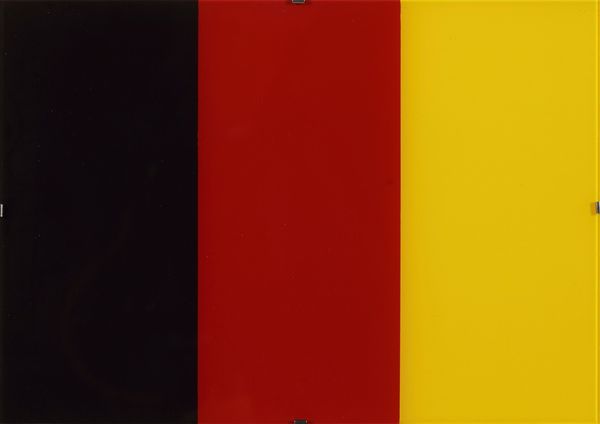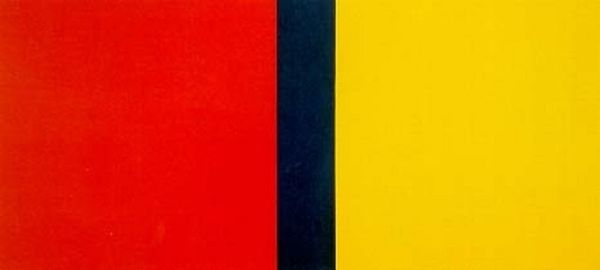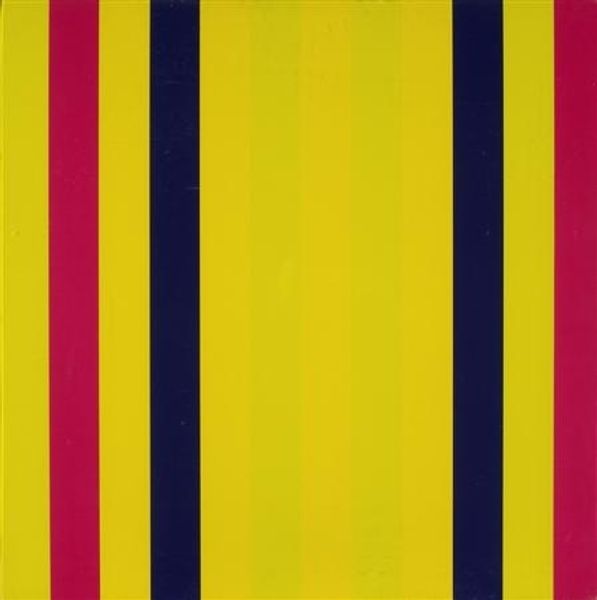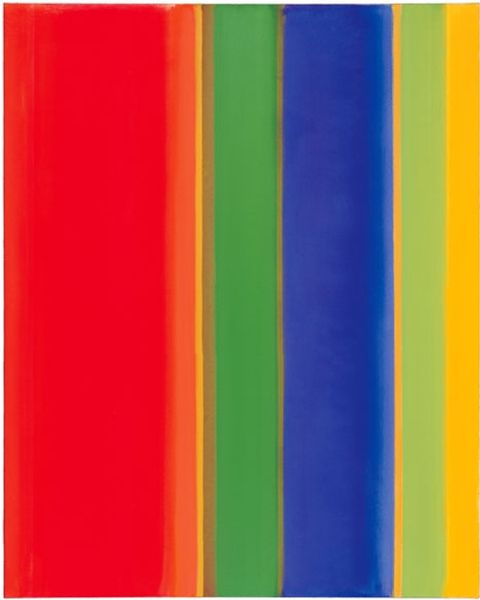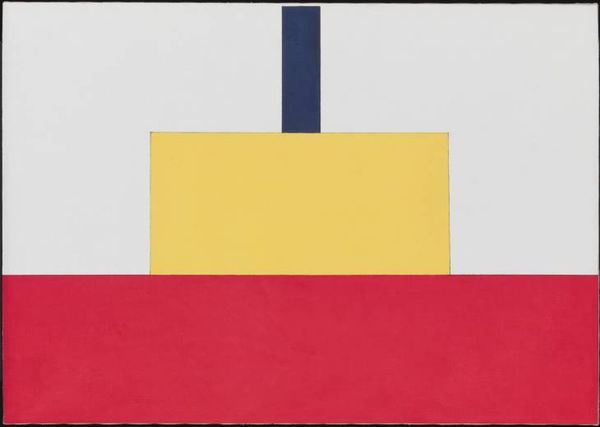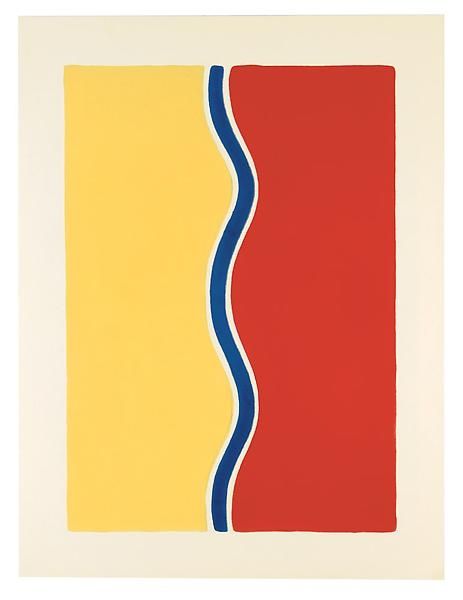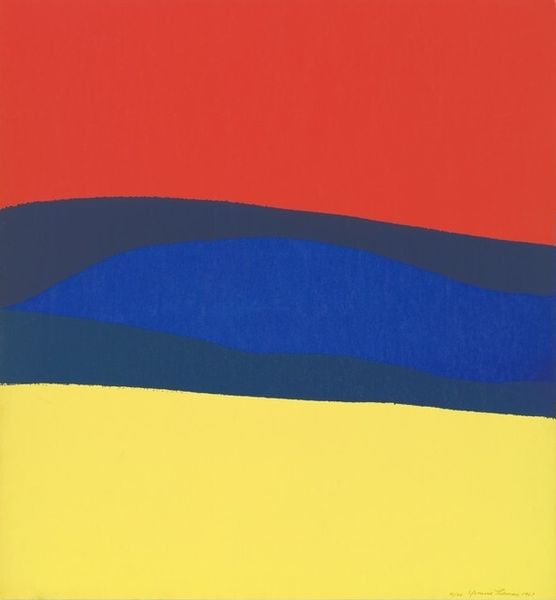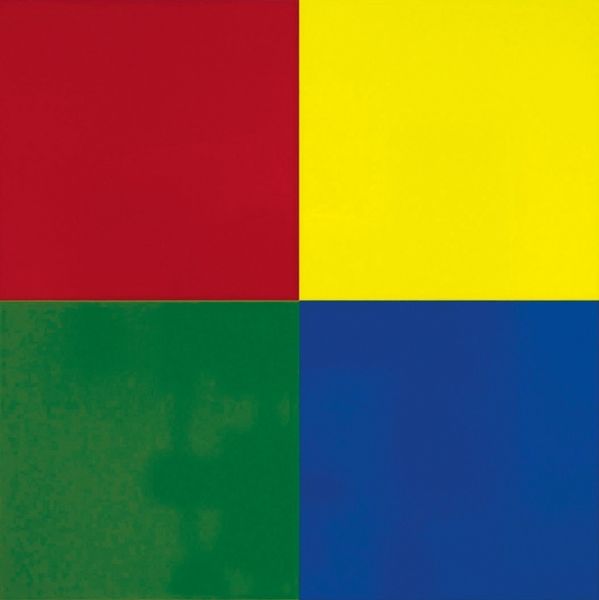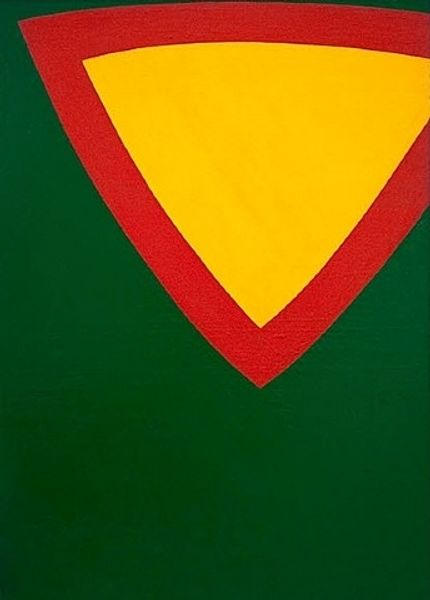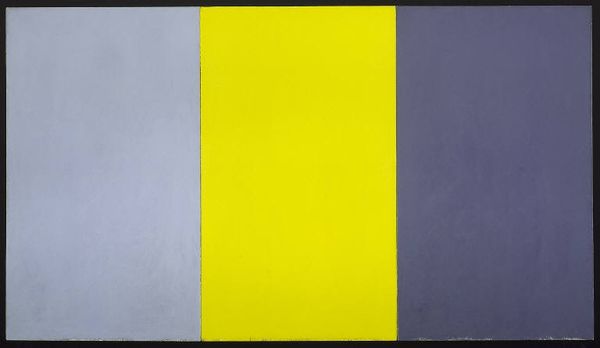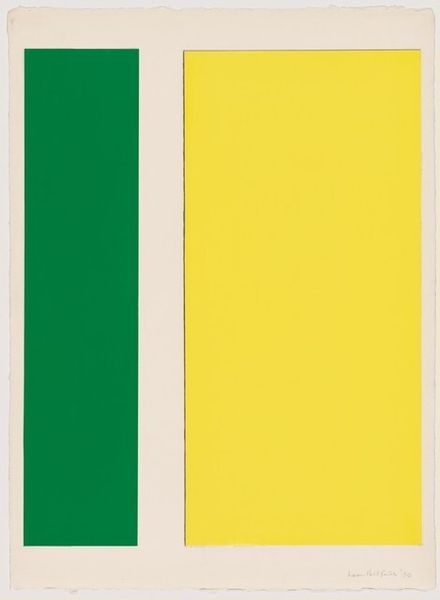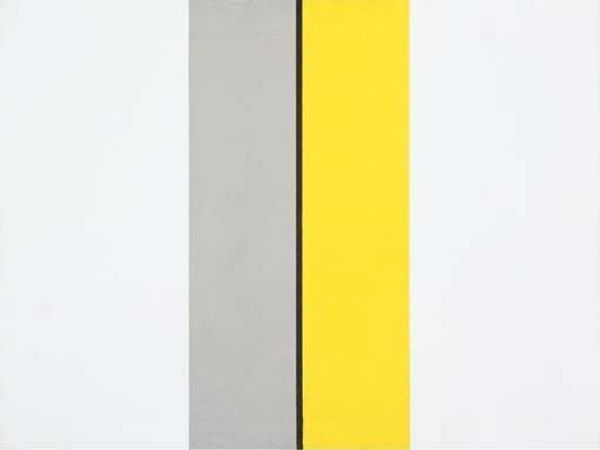
Copyright: Brice Marden,Fair Use
Curator: We're standing before Brice Marden's "Red Yellow Blue Painting No. 1," completed in 1974 using acrylic paint. What strikes you first about this piece? Editor: The immediate impact is its serene simplicity. Three vertical blocks of color—red, yellow, and blue. The surface texture looks almost matte. It’s so elemental, so contained. Curator: And what narrative do you think it is trying to portray with those chosen elements? Minimalism, like this work, emerged partly as a response to the perceived excesses of abstract expressionism and consumer culture. Editor: I see that, yet for me, it operates purely on the level of sensation. The juxtaposition of these colors—the vibrancy of the yellow offset by the cooler blue and grounded by the red—it sets up an interesting vibration. Curator: Exactly. There's a powerful discourse happening within the colour field itself. In the socio-political environment of the 1970s, reducing art to such pure forms was read by some as a radical act of stripping away unnecessary layers of meaning, a democratizing gesture to say art could simply be about color and form for everyone. The artist wasn’t prescribing a meaning but instead posing the work as an egalitarian statement against what came before. Editor: I'm more taken with how these blocks interact spatially, creating an illusion of depth despite the flatness of the canvas. Curator: Consider that it’s been almost half a century since its creation, its influence continues to resonate in contemporary art. Editor: True, its purity of form allows it to transcend specific historical contexts, speaking to something fundamental about human perception. It offers a place for contemplation, where viewers can find solace. Curator: Well, perhaps its democratic intention has, at least formally, served a long purpose in an art historical context, if that’s enough to hold up given today's contemporary criticisms. Editor: Ultimately, this is not only a piece for contemplation, but also for considering where our differing vantage points situate us when faced with art.
Comments
No comments
Be the first to comment and join the conversation on the ultimate creative platform.
